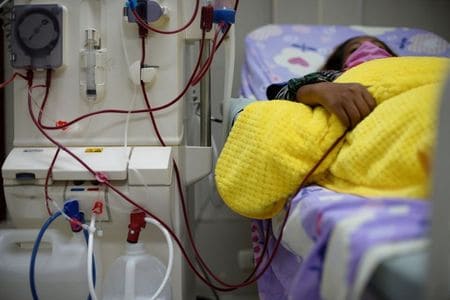Because peritoneal dialysis (PD) is mostly performed at home, patients play an important role in avoiding PD-related complications such as peritonitis and fluid overload. Therefore, in their daily clinical practice, researchers invited patients to complete a PD self-assessment questionnaire at each outpatient appointment and examined its use for outcomes in patients starting PD.
Patients with PD catheter implantation between January 2008 and October 2018 were included in this retrospective cohort analysis. From medical records until PD discontinuation or study completion, the submission rate of a PD self-assessment form was determined (October 2020). The relationship between submission rate and technique survival was investigated.
During the research period, 44 of the 105 enrolled patients (78 males, 60.4±12.2 years) stopped PD and were switched to hemodialysis. The median submission rate was 78%, with 52.3 (28.7-79.3) months follow-up period. The log-rank test revealed that technique survival was substantially higher in patients with a submission rate of 78% than in those with a submission rate of <78% (P=.006). The Cox regression analysis adjusted for age, gender, Charlson comorbidity index, estimated glomerular filtration rate, and geriatric nutritional risk index found that the submission rate was still substantially linked with fewer method failures (hazard ratio 0.88 per 10%, P=.002).
In patients starting PD, the submission rate of a PD self-assessment form effectively predicts technique survival. Therefore, instruction that improves submission may enhance technique survival in Parkinson’s disease patients.


